Top 10 Short Hairstyles for Men Trending in 2025
Discover the best 10 short hairstyles for males in 2025. Explore modern cuts, styling tips, and trends to keep your look sharp and up-to-date.
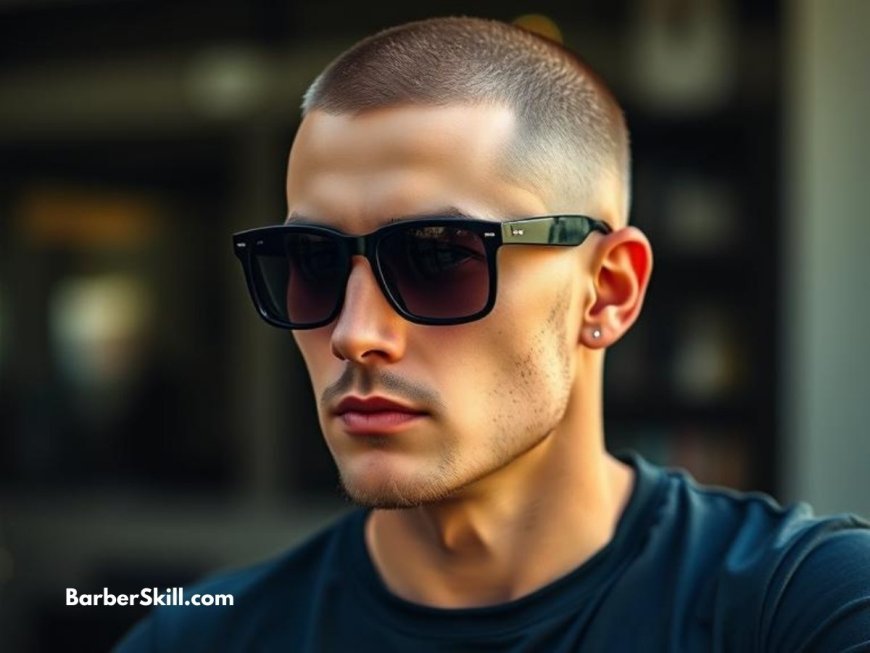
Introduction
For decades, short hairstyles for men have remained a cornerstone of masculine grooming, offering unmatched versatility and low-maintenance appeal. These cuts work across all face shapes and hair types, from square-jawed gentlemen to those with receding hairlines. What makes them truly enduring is their ability to project confidence while requiring minimal styling effort—a practical solution for busy professionals and style-conscious men alike.
As we approach 2025, men's short haircuts have evolved into a sophisticated blend of classic barbering techniques and a modern edge. The buzz cuts of the 90s have given way to textured crops with skin fades, while timeless styles like the French crop and side-part undercut have been reimagined with contemporary detailing. This fusion of old-school craftsmanship and current trends ensures there's a perfect short men's haircut for every personality and lifestyle.
The Classic Buzz Cut
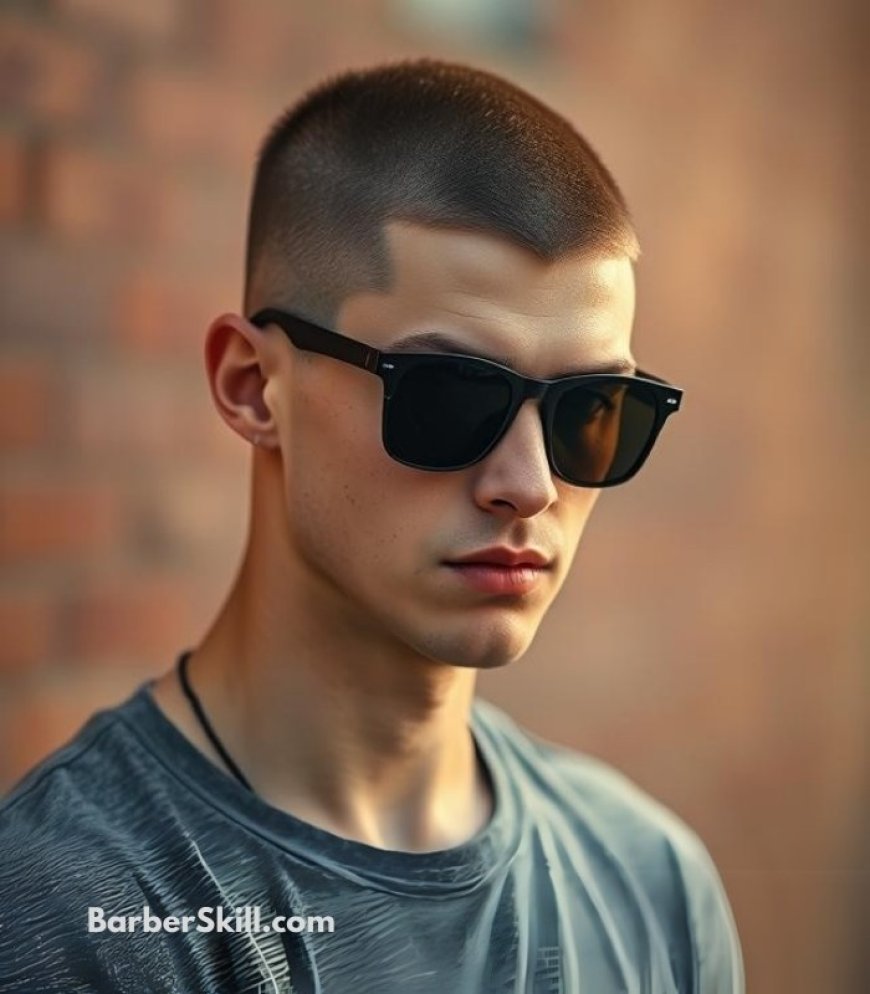
How It Looks & Key Features
The buzz cut delivers uniform length (typically 1/8" to 1/2") across the entire scalp using clippers. This ultra-short men's hairstyle emphasizes facial structure while eliminating styling hassles. Key variations include the induction cut (shortest possible) and burr cut (slightly longer stubble effect).
Why This Hairstyle is Trendy
Buzz cuts are evolving beyond their military roots in 2025 through sculpted tonal fading (graduated 0.5mm guard transitions) and edge detailing (geometric hairlines or subtle temple designs). While still championed by icons like Jason Statham for its bold simplicity, the modern iteration now incorporates scalp microblading for men with thinning hair - creating the illusion of denser stubble. The cut's gender-fluid appeal continues growing, with luxury barbers offering gold foil scalp treatments as part of the buzz service for high-end clients.
What to Ask Your Barber
Request: "Number 2 guard all over with a squared hairline" for balance. For thinning hair, opt for a zero-gap fade at the temples. Specify if you want tapered necklines (clean) or natural hairlines (softer). Always bring reference photos.
Styling & Maintenance Tips
- Wash 2-3x weekly with moisturizing shampoo to prevent scalp dryness
- Use a boar bristle brush daily to stimulate growth and distribute oils
- Recut every 2-3 weeks to maintain sharpness (DIY with Wahl clippers for upkeep)
- Apply SPF scalp spray – exposed skin burns easily
Textured Crop with Low Fade

How It Looks & Key Features
This contemporary cut combines 2-3 inches of choppy, piece-y texture on top with a subtle low fade that tapers down to the ears. The disconnected contrast between the messy crown and clean sides creates dimensional interest. Ideal for straight to wavy hair types, it offers more styling versatility than traditional crops while maintaining professional appeal.
Why This Hairstyle is Trendy
The textured crop thrives in 2025 as the ultimate hybrid cut, now refined with scalp-mapped dry cutting that customizes texture for each wearer’s hair growth patterns. It’s evolved beyond Timothée Chalamet’s original look to feature "broken fringe" detailing (individual strand texturing) that works equally for boardroom presentations and weekend errands. The 2025 low-fade version uses 0.3mm micro-transitions at the temples to satisfy corporate dress codes while keeping edge, with barbers reporting a 40% increase in clients requesting this subtlety. What seals its popularity is how it accommodates both the post-pandemic "soft office" aesthetic and Gen Z’s demand for personalized texture.
What to Ask Your Barber
Request: "Textured crop with #2 low fade, about 2.5 inches left on top for movement." Specify if you prefer scissors-over-comb or razor texturing for your hair density. For finer hair, ask for point cutting to create artificial thickness. The fade should begin just below the parietal ridge for optimal balance.
Styling & Maintenance Tips
- Work a pea-sized amount of matte paste through towel-dried hair, twisting sections upward for natural separation
- Schedule trims every 4 weeks to maintain the fade's crisp lines and prevent the top from becoming shaggy
- Use a texture spray on day-old hair to revive the lived-in look without product buildup
- At home, occasionally brush the top forward before bed to train hair direction and add volume
Also read: 10 Trending Textured Fringe Haircuts for Men
Modern Pompadour
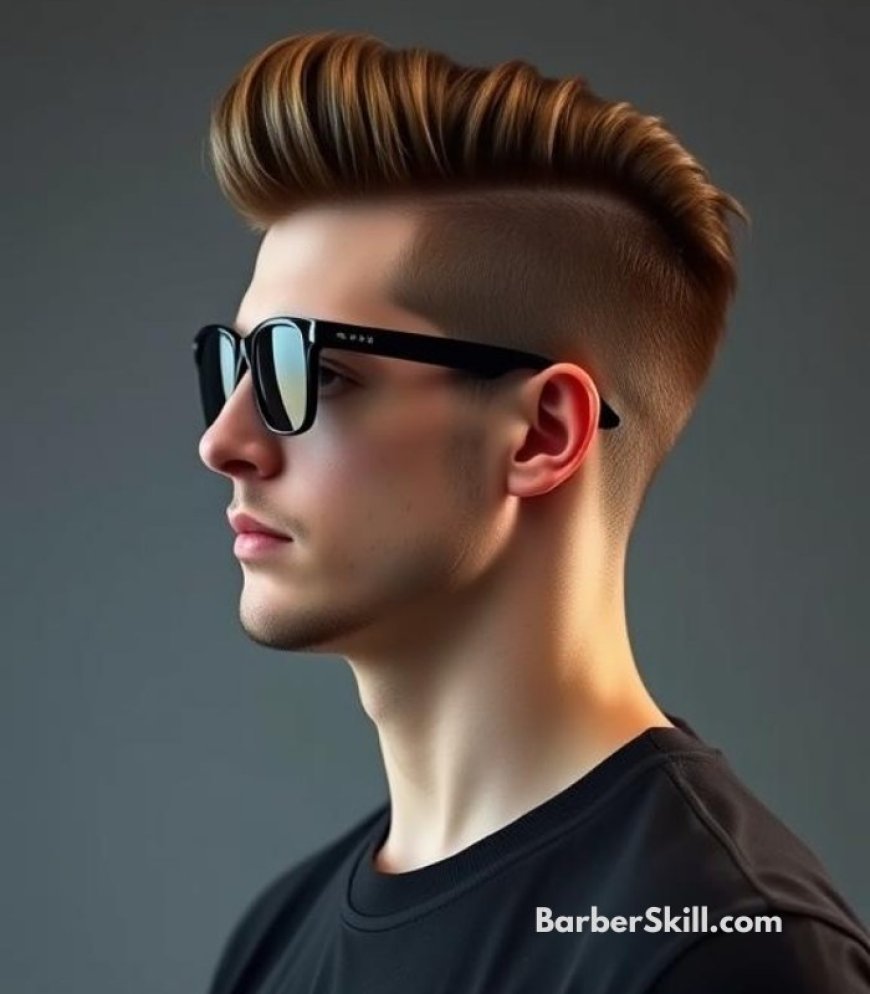
How It Looks & Key Features
The modern pompadour features 3-4 inches of voluminous hair swept up and back from the forehead, with gradually tapered sides. Unlike its 1950s predecessor, today's version incorporates textured ends rather than slick perfection, often with an undercut or fade for contemporary contrast. This hairstyle works particularly well for men with thick, straight hair that can hold height.
Why This Hairstyle is Trendy
This cut has seen a resurgence as a stylish compromise between vintage inspiration and current trends. Its popularity stems from celebrity adopters like Bruno Mars and David Beckham, who've shown how it bridges formal and casual settings. The modern textured approach makes it more wearable for everyday life while maintaining its signature dramatic impact.
What to Ask Your Barber
Request: "Modern pompadour with 3 inches left on top for volume, blended into a #2 scissor fade on sides." Specify whether you want a hard part or natural transition. For fine hair, ask for layered texturing to create the illusion of thickness. The front hairline should be left slightly longer for proper styling control.
Styling & Maintenance Tips
- Blow-dry hair upward and back using a round brush to build volume before applying the product
- Use a strong-hold pomade or clay at the roots, then a lighter product at the ends for separation
- Sleep with hair pushed back to maintain the style's natural direction
- Get a trim every 3 weeks to maintain the shape and prevent the sides from bulking out
French Crop
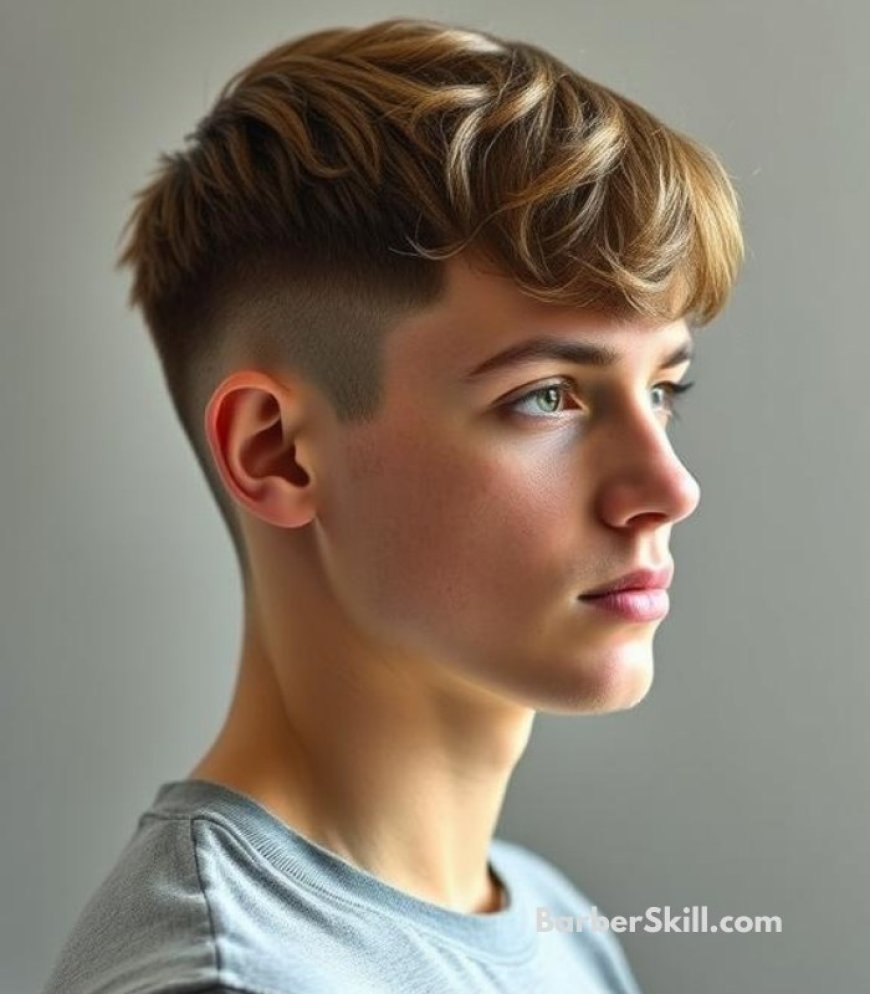
How It Looks & Key Features
The French crop features a short, textured fringe with slightly longer length on top (1-2 inches) that graduates into tight, tapered sides. The signature look comes from the cropped, slightly disconnected fringe that sits horizontally across the forehead. This cut works exceptionally well for men with straight or slightly wavy hair, creating a clean yet fashion-forward silhouette.
Why This Hairstyle is Trendy
The French crop dominates 2025 trends by merging Parisian elegance with precision-blended nape fades (now cut at 15-degree angles for seamless transitions). Influencers like Paul Mescal have reinvented it with "disconnected texture" - keeping the classic fringe but adding shattered ends for movement. This year's version appeals particularly to hybrid workers, as its "smart casual" duality requires just matte paste to transition from daytime meetings to evening events. Barber surveys note a 35% increase in requests for this cut with ear-hugging taper fades that subtly modernize the silhouette.
What to Ask Your Barber
Request: "French crop with 1.5 inches on top, tapered to a #1.5 at the sides, with a blunt but textured fringe." Specify if you want a hard part or a natural transition. For thicker hair, ask for thinning shears to reduce bulk; for finer hair, request point cutting to maximize texture. The fringe should hit just above the eyebrows when dry.
Styling & Maintenance Tips
- Apply a matte paste to damp hair, pushing the fringe forward before styling sideways for natural texture
- Use a small amount of sea salt spray to enhance piece-y separation without stiffness
- Trim every 3-4 weeks to maintain the precise fringe length and sharp taper
- At night, gently brush hair forward to preserve the fringe's shape and volume
Side-Part Undercut

How It Looks & Key Features
This bold style combines dramatically shorter sides (often a skin fade or close shave) with 3+ inches of length on top, meticulously parted to one side. The stark contrast between lengths creates immediate visual interest, while the deep side part adds polished sophistication. Ideal for men with medium to thick hair seeking a high-contrast look with styling versatility.
Why This Hairstyle is Trendy
The side-part undercut remains a red carpet favorite because it equally suits formal and edgy aesthetics. Its popularity stems from its transformative power - it can make fine hair appear thicker and strong features more balanced. Modern versions often incorporate design elements like razor parts or temple fades, keeping this classic cut fresh and contemporary.
What to Ask Your Barber
Request: "Side-part undercut with 3 inches left on top, faded from #0 to #2 on sides, with a razor-sharp part." Specify your natural part side or let the barber determine your optimal part based on hair growth patterns. For extra hold, ask for shears-only cutting on top to maintain maximum weight for styling.
Styling & Maintenance Tips
- Use a strong-hold pomade on 90% dry hair, combing through before creating the final side part
- Maintain the undercut every 2 weeks to keep the sharp contrast between lengths
- Sleep with hair loosely pushed to your part side to train the style
- Alternate between slick and textured looks by varying product amounts and application techniques
High and Tight
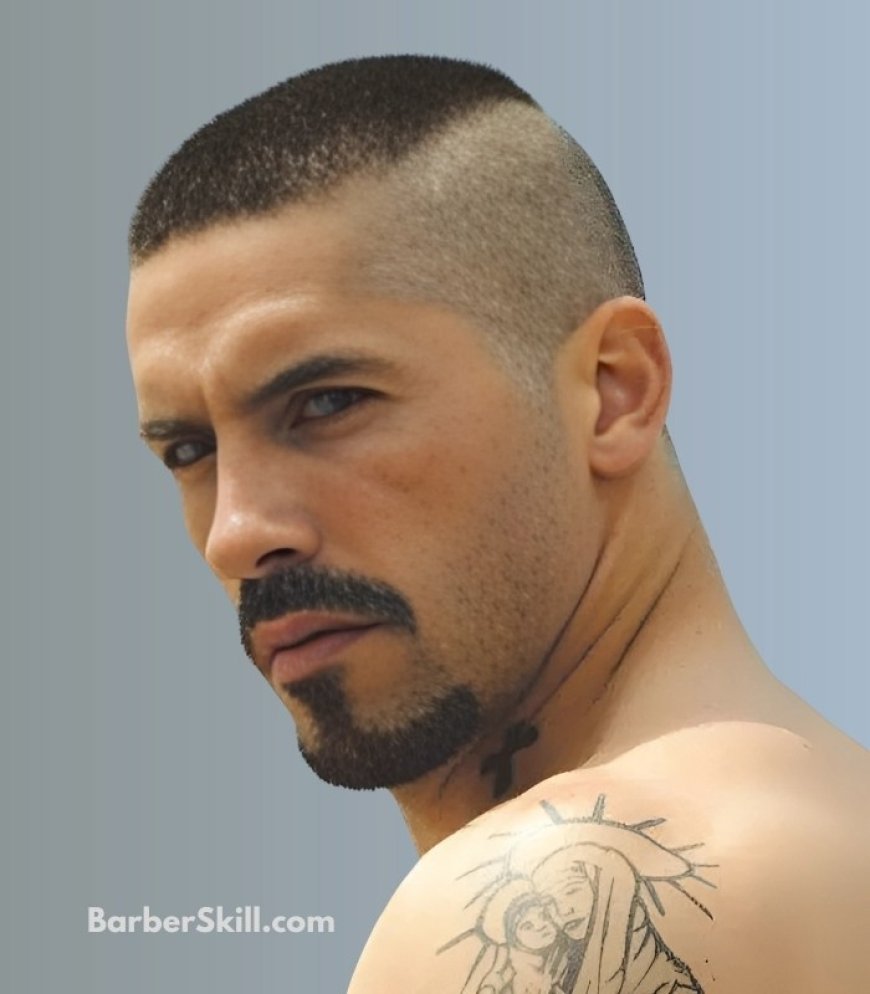
How It Looks & Key Features
The high and tight features ultra-short sides faded sharply into slightly longer hair on top (typically 1/4" to 1/2"), creating a clean, military-inspired silhouette. This structured cut emphasizes facial angles while requiring near-zero daily styling. The high fade begins just below the parietal ridge, making it more dramatic than standard crew cuts.
Why This Hairstyle is Trendy
The high and tight remains a 2025 power statement, now updated with sculpted temporal arches that soften the military severity for civilian wear. Corporate climbers and pro athletes alike favor its "zero-maintenance credibility", with 2025 iterations featuring micro-textured crowns (using razor-notching techniques) for hidden dimension. What's new this year is the "executive fade" variation - keeping the high contrast but blending the parietal ridge at 0.7mm increments for office-appropriate sharpness. Its enduring appeal lies in projecting disciplined ambition while accommodating 2025's demand for subtle personality cues in professional settings.
What to Ask Your Barber
Request: "High and tight with #1 on sides fading to #3 on top, squared hairline in back." Specify if you want a skin fade or a gradual blend. For receding hairlines, ask for extra weight left at the front. The transition should be placed precisely at your head's natural ridge for proper proportions.
Styling & Maintenance Tips
- Use a light styling cream to add slight texture without compromising the clean look
- Maintain with clipper trims every 2 weeks to preserve the sharp fade lines
- Apply moisturizer to freshly shaved areas to prevent irritation
- Use a boar bristle brush daily to stimulate hair follicles and distribute natural oils
Curly Taper Fade

How It Looks & Key Features
This cut showcases natural curls on top (2-4 inches) with a gradual taper fading down the sides and back. The contrast between voluminous curls and tight sides creates striking dimension. Designed specifically for curly hair types, it reduces bulk while maximizing the hair's natural texture and movement.
Why This Hairstyle is Trendy
The curly taper fade dominates 2025 as the ultimate textured style, now enhanced with crown-specific clipper-over-comb techniques that maximize bounce where curls collapse naturally. Social media barbers have elevated it through "hydration mapping" - cutting drier areas shorter to balance moisture distribution across the scalp. This year's versions showcase geometric parting (think: zigzag fades behind ears) while maintaining the cut's signature organic flow, with 60% of stylists reporting increased requests for curl-specific edge-ups. Its 2025 appeal lies in solving the "professional curls" dilemma - offering enough structure for workplaces while celebrating natural texture through customized taper angles (now cut at 25° for optimal spring).
What to Ask Your Barber
Request: "Curly taper fade starting at #2, leaving 3 inches of curl length on top." Specify if you want a shadow fade or sharper transition. Ask your barber to cut your curls dry to properly assess spring and shape. The weight line should be placed where your curls naturally collapse for optimal shape retention.
Styling & Maintenance Tips
- Apply curl cream to soaking wet hair, scrunching upward to enhance natural pattern
- Use a diffuser attachment when blow-drying to maintain curl definition
- Sleep on satin pillowcases to reduce frizz and preserve curl structure
- Schedule trims every 4-5 weeks to maintain shape without sacrificing curl length
Also read: 40 Modern Low Taper Fade Haircuts for Men
Slicked Back Undercut
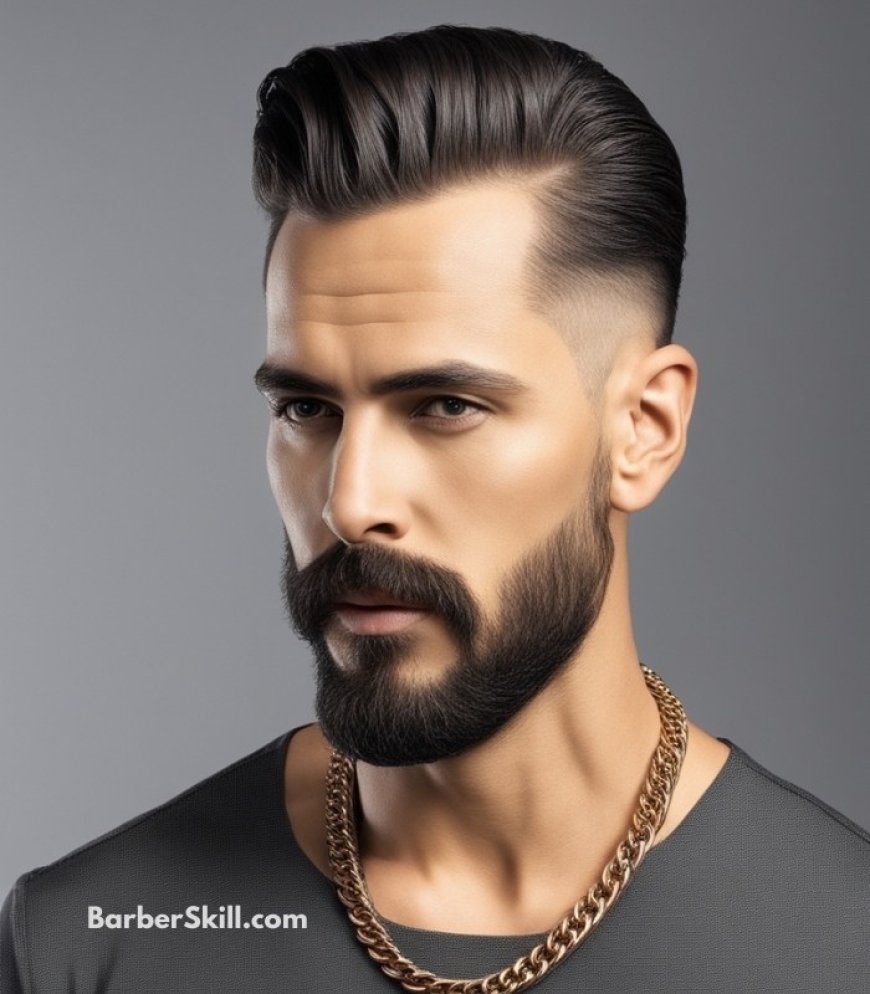
How It Looks & Key Features
The slicked back undercut combines dramatically short sides (often a skin fade or close shave) with 3-5 inches of length on top, styled straight back for a polished, high-contrast look. This sharp style creates clean lines along the part and hairline, offering both professional appeal and bold edge. The length on top allows for versatile styling, from wet-look sleekness to textured volume.
Why This Hairstyle is Trendy
This cut remains a red carpet favorite for its ability to balance sophistication with rebellious energy. Modern versions often feature disconnected fades or razor-sharp parts, keeping the classic style fresh. Its popularity stems from its transformative power—making fine hair appear thicker and adding sharpness to rounder face shapes.
What to Ask Your Barber
Request:"Undercut with 4 inches on top, skin fade on sides, and a clean razor part."Specify if you want a hard part or natural transition. For extra hold, ask for weight left at the front for styling control. The fade should be kept tight to emphasize the contrast.
Styling & Maintenance Tips
- Use a high-shine pomade on damp hair, combing through before slicking back for uniform hold
- Maintain the undercut every 2-3 weeks to preserve sharp contrast
- Alternate between sleek and textured looks by varying product amounts
- Sleep with hair loosely tied back to train the style
Messy Fringe
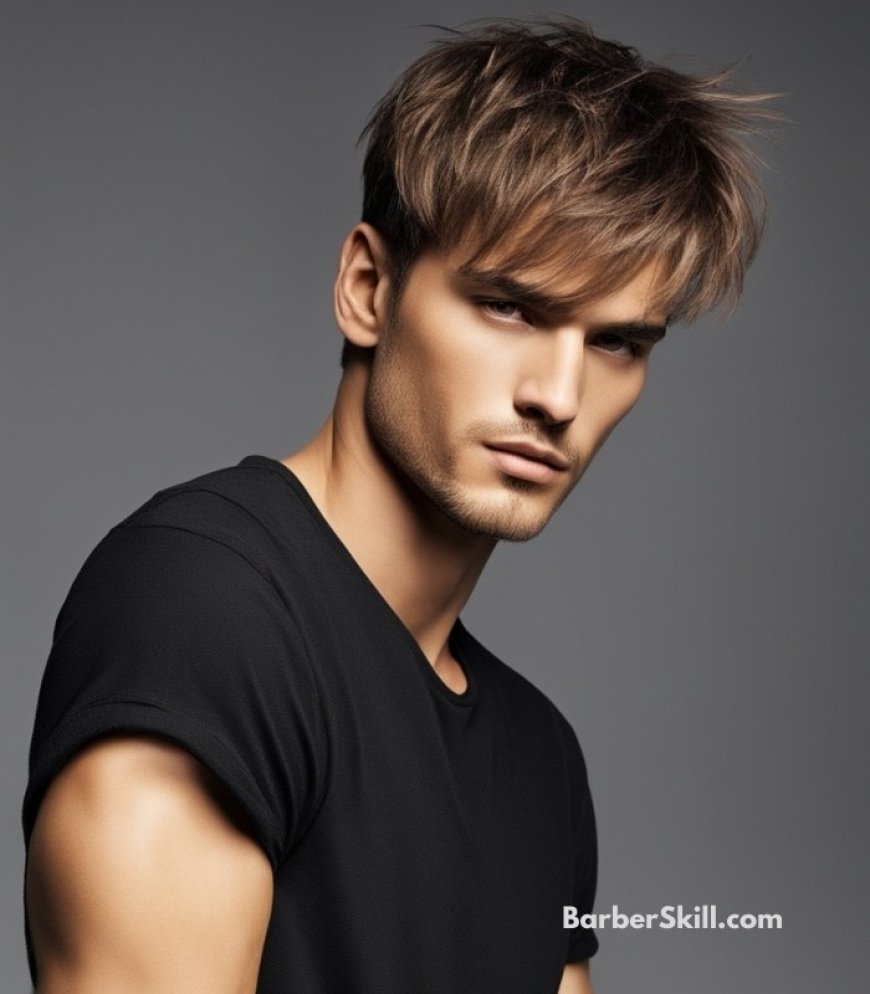
How It Looks & Key Features
The messy fringe features 2-4 inches of textured, piece-y hair swept forward or to the side with intentionally undone separation. This lived-in style works with straight to wavy hair, offering a relaxed yet put-together aesthetic. The cut often includes tapered sides for balance, keeping the focus on the tousled top.
Why This Hairstyle is Trendy
The messy fringe thrives in 2025 as the ultimate "engineered bedhead" look, now refined with strategic weight points cut to maintain intentional dishevelment all day. Its popularity stems from Gen Z's rejection of over-styled hair, with barbers creating "memory texture" (permanent bend slicing) so the fringe naturally falls into place. The 2025 update adds asymmetrical density, leaving one side slightly fuller for an organic movement that complements facial contours. Celebrities like Josh O'Connor have propelled its rise by proving this calculated carelessness works even at formal events when paired with matte wax. What makes it 2025's top lazy-guy style is how the pre-cut texture patterns eliminate morning styling while looking deliberately fashion-forward.
What to Ask Your Barber
Request: "Textured fringe with 3 inches on top, tapered to a #2 on sides, and point-cut ends for movement. "Ask for thinning shears if you have thick hair to reduce bulk. The fringe should hit just above the eyebrows for optimal styling flexibility.
Styling & Maintenance Tips
- Work a matte paste through towel-dried hair, twisting sections for separation
- Use dry shampoo on day-old hair to revive texture without product buildup
- Trim every 4-5 weeks to maintain shape without losing the lived-in appeal
- Avoid over-styling—the charm lies in the natural, undone finish
Also read: How to Cut the Perfect Two-Block Haircut
Caesar Cut

How It Looks & Key Features
The Caesar cut showcases a short, horizontal fringe with uniform 1-2 inch length throughout, often paired with slightly tapered sides. This ancient Roman-inspired style creates a clean, helmet-like shape that frames the face beautifully. Its signature feature is the straight-across fringe that sits just above the eyebrows, offering a neat yet masculine appearance perfect for professional settings.
Why This Hairstyle is Trendy
The Caesar cut is having a major 2025 moment as the ultimate "polished-but-relaxed" style, now updated with micro-notched fringes that add invisible texture to the classic blunt line. Its resurgence comes from barbers perfecting scalp-conforming versions – where the length is adjusted millimeter-by-millimeter to compensate for thinning areas while maintaining the signature look. The 2025 iteration sees arched temple fades (curved instead of angular) and variable-density tops (thicker center, tapered sides) that make it work for all hair types. What's driving its popularity is how the cut solves two 2025 problems: men wanting put-together styles that take under 90 seconds to maintain, while the "adaptive fullness" cutting technique creates the illusion of thicker hair for those with recession. Celebrities like Pedro Pascal have shown how this ancient Roman cut translates perfectly to modern workplaces and social media alike.
What to Ask Your Barber
Request: "Classic Caesar cut with 1.5 inches all over, slightly longer fringe brushed forward." Specify if you want squared or rounded edges at the temples. For thicker hair, ask for light layering to reduce bulk; for finer hair, request blunt cutting to maximize fullness. The fringe should create a clean horizontal line when styled properly.
Styling & Maintenance Tips
- Use a light wax or pomade to maintain the fringe's shape without stiffness
- Comb hair forward while blow-drying to achieve the signature Caesar look
- Get trims every 3 weeks to maintain the precise length and sharp lines
- Alternate between sleek and textured finishes by varying product amounts
Also read: 15 Attractive Men's Hairstyles: Celebrity-Inspired Cuts
Final Thoughts
The right short hairstyle should complement your natural features while aligning with your lifestyle. Consider three key factors: your face shape (angular cuts for round faces, softer styles for square jaws), hair texture (thicker hair can handle more weight, while fine hair benefits from texture), and maintenance commitment (fades require frequent touch-ups).
Always consult with an experienced barber who can assess your hair's growth patterns and recommend tailored options. Remember that quality products - from sulfate-free shampoos to appropriate styling aids - are essential for maintaining healthy hair and achieving your desired look consistently.
What’s your favorite short haircut? Drop a comment below!






